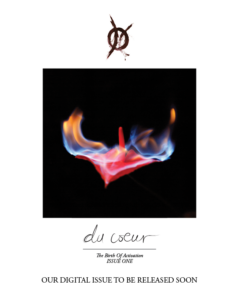
By: Nina IrizarryThe art exhibit, Bethlehem Beyond the Wall has images that unveil everyday life. It is modern culture contrasted with antiquity and the spirit of perseverance and independence in Bethlehem, all of which are often shrouded by the mainstream media, stereotypes, and Western misconceptions.
The main purpose of this exhibit is to show the resilience of the Palestinian people and their ability to generate opportunity and hope in the face of oppression. The exhibition is co-curated by Bshara Nassar, Founding Director of the Museum of the Palestinian People and Mary Panzer, a recognized scholar of cultural history and photography who also held the previous title of Curator of Photographs at the National Portrait Gallery/Smithsonian Institute and is a member of Rochester’s Jewish Voice for Peace, an organization which fosters peace, human right, and equality initiatives. The two curators hope to inspire conversations with people with the purpose to inspire a love for the Palestinian people. The exhibit is separated into eight sections: The Road to Bethlehem, The People of Bethlehem, Agriculture around Bethlehem, The Church of the Nativity and Old Bethlehem, Refugee Camps, Travel through the Check Points, Resilience, and The American Colony Photo Service.
This exhibit is the strongest representation of Bshara Nassar’s initial vision for his museum and has been three years in the making. The art ranges from modern photography both from insiders in Palestine, refugees and other occupants, as well as journalists to archival photography from the American Colony Photo Service and, lastly, to paintings of the historically rich yet occupied everyday life post nakba illustrated through a painter’s mind. The exhibit consists of portraits, pictures of community and peace-making initiatives, spiritual and cultural motifs, representations from a thriving yet occupied life and juxtapositions of modern life in contrast to the past. The idea of the importance of Palestinian agriculture and love for the lands, especially the olive groves are common themes that run through the exhibition including Nasser’s family farm.
The idea for the museum started in 2011, after Bshara Nassar realized, during a visit to Washington, DC, that numerous amount of cultures were represented, yet his own people and the Palestinian heritage story was not. In the near future, a permanent space for the museum will exist in Washington, DC. He hopes the exhibition will expand both the museum’s network and the global conversation. He wants to partner with everyone who is interested including colleges, universities and churches to hold this mobile exhibition. He would also like those who have been displaced to share their stories with the museum. Art can do something politics and the international courts cannot. Nassar stated in an interview with me, “Palestinians are trapped in politics of power. Stories of normal and ordinary people are not being told. They can be told through art. Art opens up the mind and heart. One is curious then will discover more. International courts will not achieve what we are doing. We want to created partnerships to take action and feel empowered and for those to stand with the Palestinian people.”
Nassar and Panzer want a new perspective to emerge with the experience of the exhibition. They want people to see the Palestinian people as human beings with a rich cultural tradition that includes food, entrepreneurship and spirituality and to cherish Palestinian people from the Diaspora. Palestinians have made great contributions in both their home country and in the new homelands some currently reside in. And, lastly, Nassar wants to lift the veil on Bethlehem as a real place with real people.
The exhibit opening is Feb. 19th from 5:30-7 and runs until Feb. 27th (10am to 7pm) at Manhattan College in Kelly A, Bronx, NY. For more information see here. https://goo.gl/q6Tgvs

